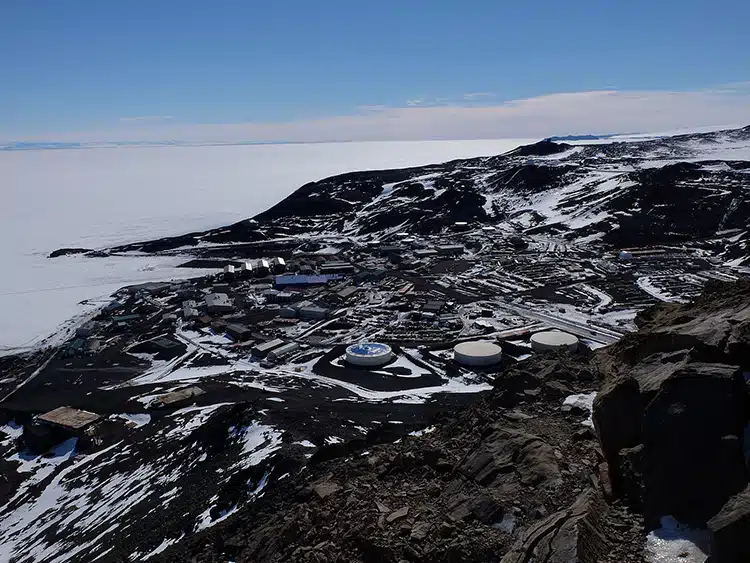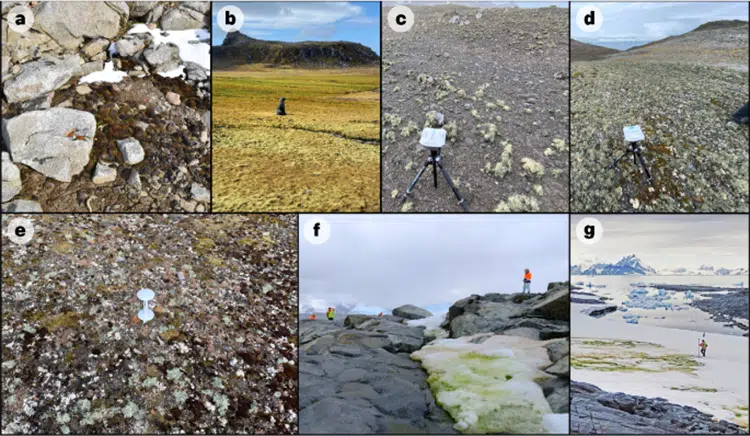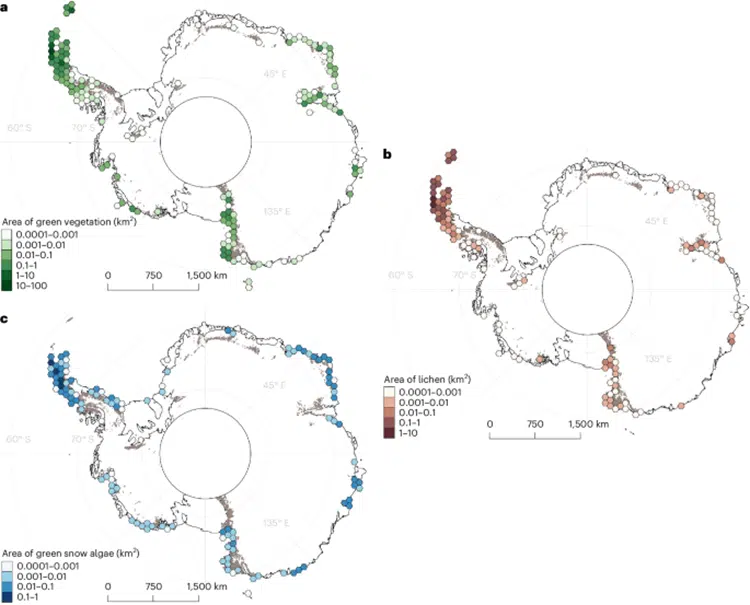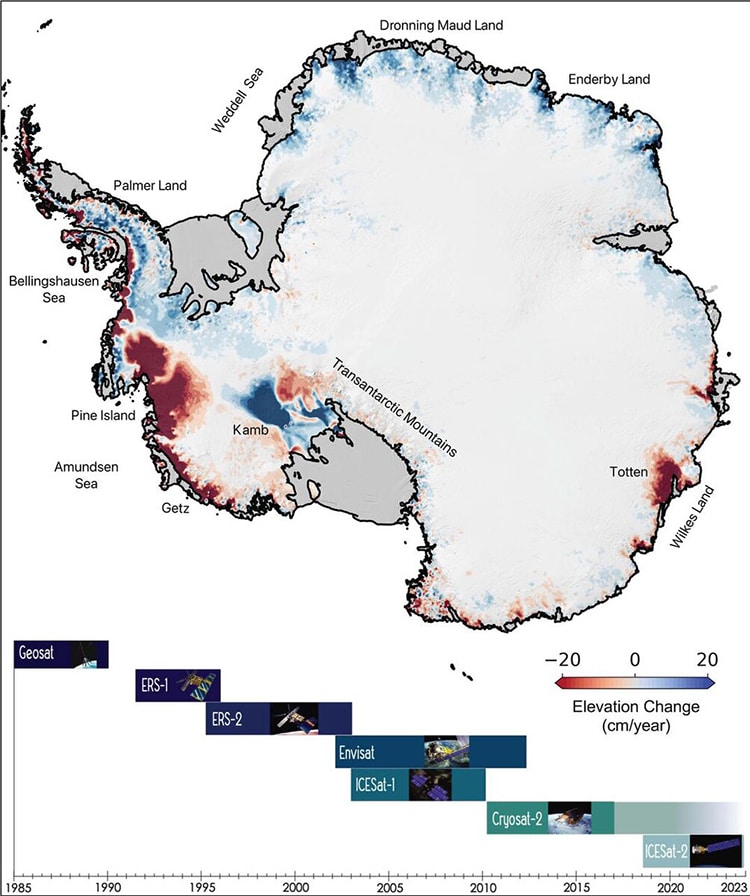McMurdo Station in Antarctica.
However, despite the admitted prevalence of ice on the continent, there is plant life too.
This vegetation survives on photosynthesis, making sustenance out of sunlight.

McMurdo Station in Antarctica. (Photo: Marco Feldmann/FH Aachen viaWikimedia Commons,CC BY 2.0)
These plants absorb carbon from the atmosphere, and they help process nutrients in the soil.
As ice melts, more plant life may result in the gap created.
The researchers also took measurements on the ground during summer expeditions.

Arctic vegetation springs up. (Photo:Walshaw et al., f. A Thgomson)
It is not evenly distributed, but rather 80% is present on the Antarctic Peninsula and nearby islands.
This new map enables us to monitor these consequences of climate change.
Arctic vegetation springs up.

Photosynthetic life of different sorts. (Photo:Walshaw et al.)
(Photo:Walshaw et al., f. A Thgomson)
Photosynthetic life of different sorts.
(Photo:Walshaw et al.)
Antarctica’s ice sheets have changed a lot since 1985.

Antarctica’s ice sheets have changed a lot since 1985. (Photo:Wikimedia Commons, Public domain)